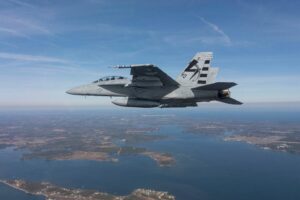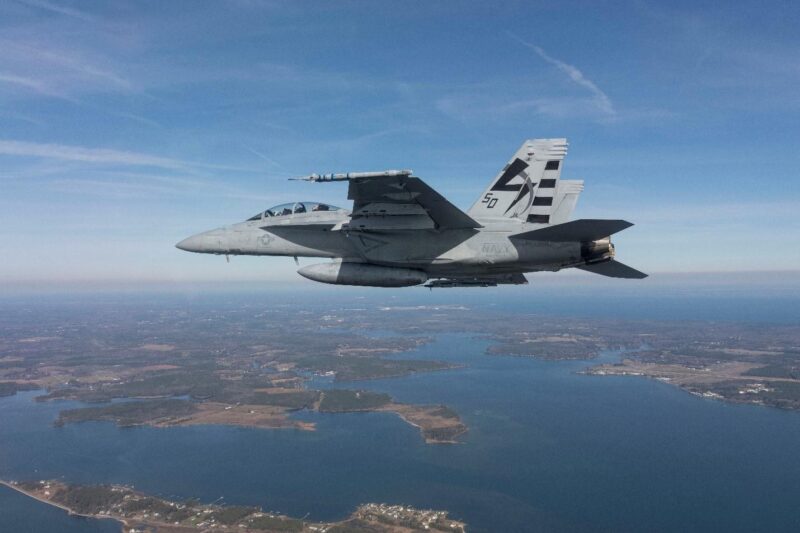 The Naval Aviation Training Systems and Ranges program office (PMA-205) received Milestone C approval for its next-generation air combat training system, the Tactical Combat Training System Increment II (TCTS II) on April 27, 2021.
The Naval Aviation Training Systems and Ranges program office (PMA-205) received Milestone C approval for its next-generation air combat training system, the Tactical Combat Training System Increment II (TCTS II) on April 27, 2021.
Approved by Program Executive Officer for Aviation Common Systems and Commercial Services (PEO(CS)), Gary Kurtz, Milestone C clears the way for the TCTS II program to transition into limited production with the support of industry partner, Collins Aerospace Systems (Collins), Cedar Rapids, Iowa.
Going into production of this capability comes after many years of work and planning done by the PMA-205 and Collins team. “I could not be more proud of this team’s achievement revolutionizing the way we train,” said Kurtz.
“This is an exciting time for the program and the Fleet as we start production on the next Tactical Combat Training System,” said Capt. Lisa Sullivan, PMA-205 program manager. “The Navy, Marine Corps and Air Force all identified a critical need for a common, encrypted and multiple-level security range training system, and PMA-205 will be delivering TCTS Inc II to meet those requirements on schedule.“
The TCTS II system is an open architecture system enabling highly secure air combat training across fourth- and fifth-generation aviation and maritime platforms, replacing and advancing the existing range training infrastructure. The Collins-developed training pod is the first to meet the services’ requirements and communicates with both airborne and ground equipment.
“The TCTS II system is also built with future growth in mind and includes key components to achieve Live, Virtual, and Constructive (LVC) capabilities,” said Sullivan.
LVC blended training is a cost-effective solution for developing and testing emerging technologies and is critical for providing aviators and weapon system operators with realistic mission rehearsal training for the complex challenges they might face during actual combat scenarios.
“The Fleet has been asking for this type of capability for some time and we, along with Collins, have worked diligently to develop, test and mature this training capability, while maintaining schedule,” said Chuck Kaylor, PMA-205 TCTS II team lead. “Obtaining Milestone C approval is a culmination of our efforts.”
Performance and flight testing will be conducted by Air Test and Evaluation Squadron Two Three (VX-23) at Naval Air Station Patuxent River, in Maryland, on the F/A-18E Super Hornet.
The Air Force teamed up with the PMA-205’s TCTS II program, leveraging investments made by the Navy to enable delivery of these training capabilities sooner and at a lower cost, helping our warfighter best prepare for real-world threats.
PMA-205 provides full life-cycle acquisition of naval aviation platforms, general training systems, training range instrumentation systems, and distributed mission training centers to provide USN and USMC pilots, naval flight officers, aircrew, and maintainers with the training equipment required to provide lethal capability and operational readiness. The program office manages flight simulators, part-task trainers, maintenance trainers, airborne and underwater training range instrumentation, threat systems, and associated curricula to ensure optimum performance for naval aviation.
Responsibilities include execution of naval aviation’s Live, Virtual Constructive training strategy, execution of the Naval Aviation Simulator Master Plan, commonality and interoperability across training systems, procurement and sustainment of training products and services to include equipment overhaul and/or replacement, engineering changes, modernization and technology refreshes, and future technology advancements for training systems and training ranges.



